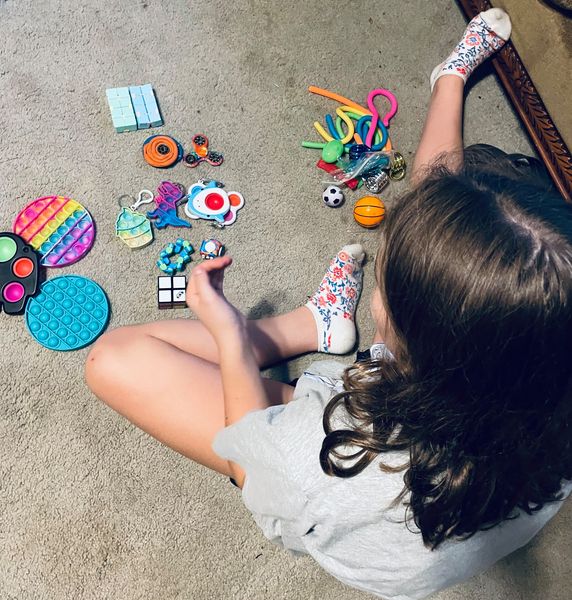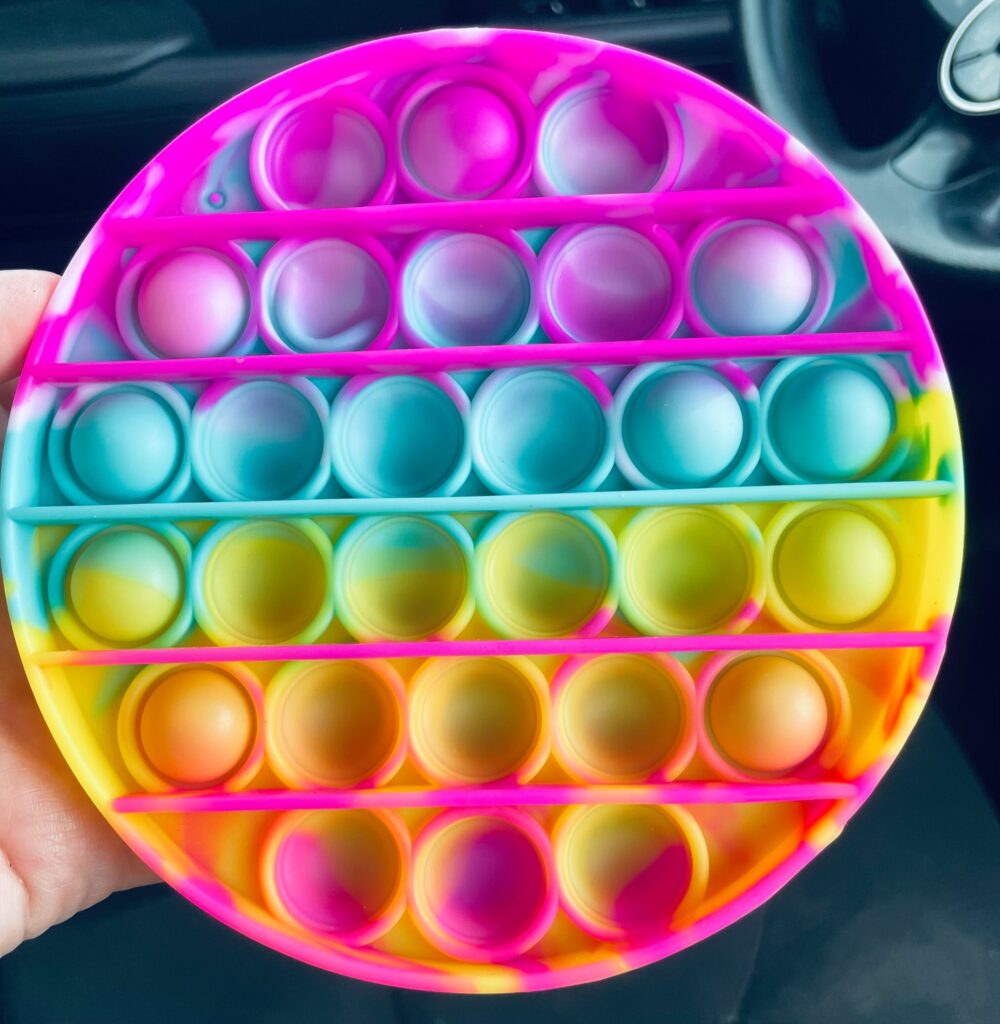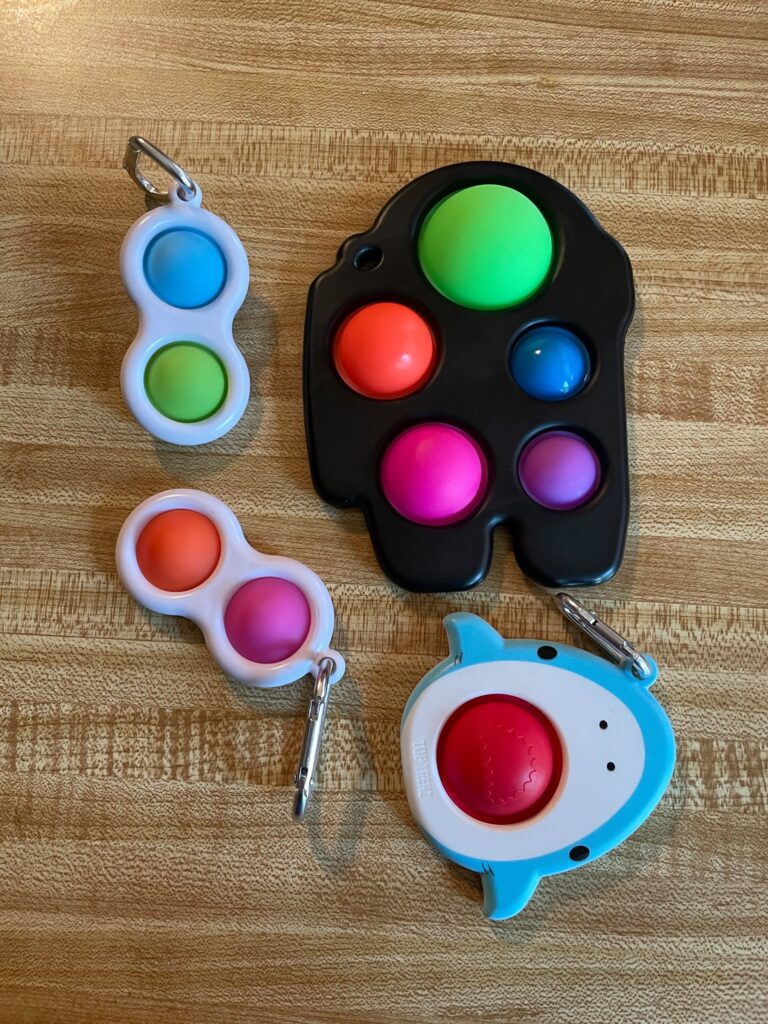Dyslexia Awareness Month: Let’s Talk Fidgets, including DIY Fidget Toys, with the help of My Tween Scout

October is Dyslexia Awareness Month and Scout and I like to use this blog to raise awareness. Scout is an amazing 12 year old who has Dyslexia. And like a lot of kids who have Dyslexia, she also has ADHD. According to Everyday Health:
As many as one in four children with ADHD also have dyslexia, while between 15 and 40 percent of children with dyslexia have ADHD.
https://www.everydayhealth.com/add-adhd/is-it-adhd-dyslexia-or-both.aspx
My amazing kid is one of the many, many kids out there who have both. Scout says ADHD is like this: I have trouble focusing and I like to move my body a lot. She can also become hyper-fixted on things, which I why when she learns how to make a new kind of fidget she doesn’t just make one, but she makes a basket full of them. In fact, just as much as Scout will do 1,000 cartwheels while trying to watch a movie, she can also spend hours alone in her room making a ton of fidgets or playing with Legos. Like Dyslexia, it isn’t just one thing and it can affect people different; it can even affect them differently at different times.
ADVERTISEMENT
ADVERTISEMENT
And as a kid with ADHD, she is a big fan of fidget toys. Like all things ADHD and Dyslexia related, it took me a while to realize the how and why of all of this. But basically, having something to do in her hand can help her focus and be better at managing tasks like reading and doing homework. Having her attention divided in this way can help her to hone in her focus, keep her body more still, and just pay better attention to the details. So where she has a tendency to want to get up and move her muscles every few minutes, having a fidget in one hand can help make the moments in between that need to move last longer so she has longer periods of focus.
How Fidgets Can Help Kids with ADHD
https://www.pacer.org/cmh/learning-center/parenting/support-adhd/fidget-toys.asp
Scout is a huge lover of fidgets. She will bring out her basket of fidgets and tell me what they all are called and show me how to use them. I’ve heard her talk about them a lot and today she has chosen to talk to you about the various kinds of fidgets out there and share with you how she has even made her own, which would be a great program idea. All of the fidgets you see here are hers, including the homemade ones. I am transcribing for her.

Fidgets 101
There are a wide variety of fidget toys out there. It’s unfortunate that they are called fidget toys, because they are actually quite helpful accessibility devices. As I mentioned, doing something in her hand can help her focus and concentrate. The fact that they are called toys and sold in the toy sections of stores can negate that they are actually a meaningful accessibility tool. So if you are someone who has bias against or doesn’t understand fidgets, please know that they are quite helpful to a lot of kids out there. You should also know that they are also new; it turns out that pretty much all of us have owned a fidget at one time or another, but older people like us grown ups didn’t always call them that. Just as long as there have been human roaming the Earth, there have been self soothing devices and kids/adults have found a way to self-manage their ADHD before we even knew to call it ADHD.
The Fidget Spinner

The idea of fidgets really broke out on the scene a few years back with the popularity of the fidget spinner. For a while, they were everywhere. You hold them in one hand and let them spin and it’s a fun distraction. As a parent, I like the fidget spinner because it is quieter. Not all fidgets are quiet. Interestingly, sometimes, the noise is part of the appeal.
Scout’s love of fidgets began with fidget spinners, but these are her least favorite at this point in part because they actually require the least amount of action. Once you get them spinning, there isn’t a lot for you to do.
We have written about DIY fidget spinners before and all the spinners you see in the picture above were made by teens. Scout has made some out of 3D pens, paper, and more. You need to purchase bearings for the center, but what you do with that center is open to a wide. The bearings can be purchased in bulk at a variety of online retailers.
Fidget Cubes

Fidget Cubes are cubes with a variety of activities on each side. The appeal here is that you can move it around and do a variety of activities, so you aren’t stuck with any one thing in your hand. There is a lot of clicking, feelings, and movement involved.
You can make your own using cardboard and whatever is left over in your craft cabinet. Scout has made a couple using what we have laying around the house including hot glue, it turns out that dried hot glue is tactiley pleasing for many people. Googly eyes, clothes pins, pony beads and more work well for this activity. If you have some laying around and it can be hot glued to a surface, it will probably work.
The Popper or Poppit

One of the more popular fidgets today is the popper. They come in different shapes and sizes and they have these little silicone bubbles that you can pop. Yes, it’s very much like popping packaging bubbles except for better for the environment. And yes, it’s very noisy like popping packaging bubbles. She is 100% not allowed to take these ones to school because I respect her teachers. In addition to the tactile pleasure here, she likes the rhythm of it. She’s also a big fan of the collectibility of it; who doesn’t like to have a variety of fun shapes and sizes?

Here’s a fun hack for you, you can buy silicone candy molds for a lot less money at your local discount grocery store and they are a very good substitute.

You can also make a Lego type Popper, which Thing 2 has done and really liked. This is a great activity if you have a Lego Club.
The Dimpl and the Simple Dimpl

The Dimpl and the Simple Dimpl come in very fun shapes and have a few larger popping circles. Like the poppers, they are fun to collect because of all the shapes and sizes that they come in. They also usually have carabiners on them so they can clip onto a lanyard or backpack. These are less noisy than the poppers, but not totally silent. But a lot of ADHD kids have issues with misplacing things, so being able to hook them onto a backpack or lanyard is really nice.
We made a version of a Simple Dimple using Lego:

There is also a variety of tutorials out there about how to DIY your own using other materials.
Squishies and Stressballs

ADVERTISEMENT
ADVERTISEMENT
Have you ever been given a stress ball at a trade show? You had a form of fidget, they just called it something else. Now they make them in all kinds of shapes and sizes and they are cute and collectible. They are also quiet!
You can make your own by filling a balloon with playdough, kinetic sand (and there are online recipes to make your own), or Orbeez. You can also make your own by making a duct tape pouch and filling it with plastic grocery bags as you see above. There are a lot of tutorials online and we’ve tried several. The kinetic sand in a balloon and the plastic bags in duct tape are quick, easy and not that expensive.
Tangles, Infinity Cubes and Wacky Tracks

There are several fidget toys that involve infinity like tangles that you manipulate. When I was a kid, we called these the Snake and didn’t know they were fidget toys. You can make your own very easily by making paper chains and gluing the ends together. In fact, there are a lot of fidget related things you can do with origami.
So there you have it, 6 fun ways that you can DIY your own fidget toys. Having a program where tweens and teens were invited to come in and make their own fidgets is not only fun – it promotes accessibility!! In my house, we definitely have some rules about what fidget tools can be used where (noisy fidgets don’t go to school), but I also have evolved to understand that they are helpful for a large number of kids. I hope that if you don’t understand the appeal of fidgets, that you will spend some time researching and talking to your kids about them. And if you find that your kids like them, I highly recommend DIY programs – They are a lot of fun!
Filed under: Uncategorized
About Karen Jensen, MLS
Karen Jensen has been a Teen Services Librarian for almost 30 years. She created TLT in 2011 and is the co-editor of The Whole Library Handbook: Teen Services with Heather Booth (ALA Editions, 2014).
ADVERTISEMENT
ADVERTISEMENT
SLJ Blog Network
2024 Books from Coretta Scott King Winners
Monster Befrienders and a Slew of Horror/Comedy: It’s a Blood City Rollers Q&A with V.P. Anderson & Tatiana Hill
Monkey King and the World of Myths: The Monster and the Maze | Review
Parsing Religion in Public Schools
ADVERTISEMENT







